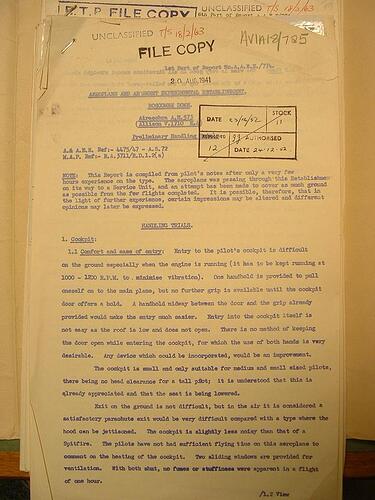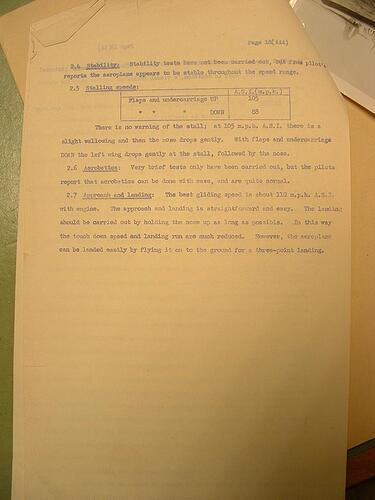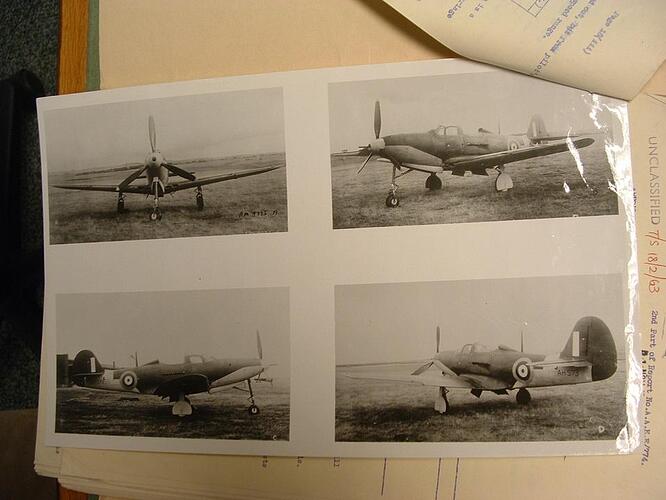Very nice, Clave! You are good at what you do. Keep us posted.
Thanks 
I have some links to get organised, then I will post some more.
Hello,
Clave your profiles are fantastic. I make skins for a WWII game I play called Aces High and would like to skin the French P-39Q of GC III/6 tail no. 438961. I was wondering if you have a higher resolution picture of the shield on the door and if it’s alright with you I would like to use your profile as a reference when I submit the skin for ingame use.
To show you what I’m talking about this is one of the P39s I have recently skined. I do not make the 3D model I just make the exterior paint scheme.

My uncle (now 86 and in great shape) flew a P-400 in the 81st Fighter Group in N. Africa, Tunisia and Italy. P-39’s operated extensivly in the MTO, but little is writen about them. Check out this link:
http://www.geocities.com/raf_112_sqdn1/81stfghonor_roll.html
He has personal stories, including the ‘39s’ that had “engine trouble” and had to land in Portugal. I’ve got image files of him in in Tunisia in ‘43’, back in the states in ‘44’ and one of the 81st FG taken in Bizerti in ‘43’. E-mail me at mountainpilot@excite.com and I’ll send them to anyone with genuine interest.
Wish one of you could make a propfile of his P-400 “Vonnie”
Later, Al:cool:
My uncle now 86 and in great shape, flew a P-400 in N. Africa, Sicily and Italy in the 81st Fighter Group. E-mail me at mountainpilot@excite.com, I’ve got a colorized image of him with his P-400 in Tunisia. Also, check out these links:
http://www.geocities.com/raf_112_sqdn1/81stfghonor_roll.html
http://www.geocities.com/raf_112_sqdn1/81st_fg.html
Rare footage of the P-39 in its short RAF service.
http://www.youtube.com/watch?v=K4ppL1hsNuI
Worth to mention: The Raf was anything but “pleased” with the Cobra.
Reads post #46 several times, and shudders
P400??? Hell’s teeth, he’s a lucky man to have survived flying one of those monstrosities.
They were condemned as near-fatally useless by the testpilots that flew them before they were issued for combat. The basic objection was that the lack of a supercharger rendered the aircraft all but powerless at low altitude and that lack of power was a fatal impedance to manoeuverability.
(Technical aside: Had the P39 been manufactured with the Allison V1710 F or Fr series engines, it would have made a fine fighter. Equipped with lowly C12 or C15 series, it was effectively doomed to near fatal mediocrity, and P400 was a C12 or C15 absent the supercharger. Memory suggests the “highest series” of Allison 1710 to see service in a P39 was the E2 or E5, and even those would be comparatively rare, once the P63 begins to be produced instead of the P39.)
It is bound to be remarked that the Russians seem to have found few faults with either the P39 (their models had the supercharger) or the P63. This is so, but since the Russians were flying the aircraft low-enough to have taxied into combat, manoeuverability was correspondingly less of an issue, regardless of altitude (ie: whatever handling error the pilot makes will kill him 98% of the time). How low is “low”? Put it like this, the RAF and USAF worried if the odd small treetop from 50 foot up got caught in the radiator intakes: Russian pilots (those that survived) would often return from missions with pieces of enemy uniform, and/or attendant blood in and around the wing undersides of their aircraft, because they were flying as low as 4 meters/13 foot above local ground, at full throttle. (Note, the propellor was 11ft 6 inches in diameter, if memory serves me rightly.)
Incidentally, when I was a young child of about 6, there was a P39 mounted axle-deep in a concrete pad at a playground. I sat in the beast and looked it over, bemused by the universal joint knuckle of the propshaft which in flight would have been whirling around just in front of the pilot’s family jewels. There was a thin sheetmetal arch over the universal joint, but it would only have added to the shrapnel value had the joint ever disintegrated. The aircraft was later “removed for restoration”, but I am unaware of it’s subsequent fate.
Regards, Uyraell.
The RAF was heartily displeased with both the P39’s and P38’s it did receive: due entirely to the US State Department which, being heavily under the influence of the severely Anglophobic Joseph Kennedy, did not allow the US to export the turbosuperchargers so vitally necessary for the successful operation of each aircraft type the Allison 1710 powered.
The P38 was flown twice by Brits and refused outright in it’s “castrated” guise with unsupercharged right-hand-only twin C15 Allison 1710’s. Those already built remained in the US as trainers and experimental planes.
The P39’s were a far less happy outcome for the Brits. Having “gotten out from under” what had been the falling P38 anvil, the poor Brits were stuck with the P39 in its’ P400 form to the extent of at least 100 machines, if memory serves (it may have been 150 - I’d have to check).
Wisely, the Brits chose to not growl overmuch (it being they were pressing for tanks, rifles, tommyguns, aircraft, transport ships, and anything else they could lay hands on, from US production) and passed the “gutless wonder” P400’s to the Free French Airforce (which was getting it’s aircraft for free).
What P400’s weren’t foisted off on the French were passed to Commonwealth Air Forces, each of which in turn scrambled rapidly to avoid that particular P400 falling anvil. Thus it was, the US, (itself now desperate to avoid the P400 anvil), tried to pass the things to China (“NO thanks!”, saith China), even while preventing the Brits from passing them to Russia. However, the US ended up issuing its’ unwanted and unloved P400’s to a few of it’s own forces.
Which is where the fairly high accident rate enters the picture.
The damned P400’s were allegedly hard to operate in a hot and sandy climate, which would have taxed the properly supercharged P39’s. Nor, it would seem, were US personnel too devoted to keeping the things operational.
At this point, enters my earlier post, #48 in this thread.
Hope this hasn’t been too much of a ramble, and has been helpful to some members.
Regards, Uyraell.
After one initial disasterous raid due to poor command, their losses were quite low. The 81st FG really were nomads. My uncle talks of trading cigs’ for eggs with the arabs. Living and flying from forward bases in Tunesia, Sicily and Near Anzio, Italy. He spoke of them flying wing inside wing, in pairs, flying under powerlines. “Just to keep our edge”. Also, when the Thompson Cup Air Races resumed in 1946, it was a P-39 that took the cup. History is writen after the fact. Opinions on the ‘39’ are varied. I’ve been a pilot since I was 18, I know how subjective they are. My opinions are based on my uncle’s, who’s experience is first-hand.
Forgive if I’m wrong, but My understanding of the '46 Thompson cup P39 is that it had been fitted with both a 3 stage three speed supercharger and an Fr9 or Fr16 series V1710 engine, which would make of it a very far from typical P39.
Regarding your uncle’s experiences, I in no way wished to discount them, nor would I have sought to do so.
My interest was in the P400, which, like a few aircraft of that era, evoke a sense of horror in me, for a raft of reasons.
In similar vein for example, the castrated Lightnings referred to, or the Exe-engined Spitfire project (mercifully stillborn) or the early Mig3, or Ms405. Each of those aircraft make me shudder, so to speak, while in some cases I’d have gladly flown others from the same stable.
Yes, opinion and hindsight are both subjective.
However, history lives through those of us who remain.
Regards, Uyraell.
Truly a remarkably bird, very modernistic innovative design for it’s time.
You are correct that the P-39s used for racing, successfully into the 1970s actually, were highly “modded” with superchargers. Something the original P-400/39s never had.
The P-39 series was hated by the Western Allies because of its poor high level performance and low ceiling, however, it could be very effective at low level as the Soviets and luckier Americans found. But the Japanese and Germans generally chose not to fight down there in their theaters of operations and the Aerocobra was useless in high level bomber escort. The P-39 was found to be invaluable as a ground attack aircraft in campaigns like Guadalcanal however…
Check out this link. A man how flew with my uncle kept a diary. Which was verboten, however now it’s a wonderful source:
http://www.geocities.com/raf_112_sqdn1/81stfghonor_roll.html
I should be stated the most of the WWII Fighter missions in the various theaters of operation were tactical, air to ground, sans escort missions. So odds were if you flew fighters in WWII, you were staffing, bombing, and other fighter sweep ops’. A role the P-39/400 was entirely suited for. I understand this from speaking to WWII veteran Fighter pilots.
Suited for: yes. Designed for, No.
The P39 had been designed as a medium to (then) high altitude fighter, capable of dogfighting at between 12000 and 26000 feet.
It was not a success for a number of reasons, not least of which the supercharger issues and the geometry and airflow issues the cylinder intake ports of the Allison engines suffered from; which engines, even supercharged, failed to make the P39 perform adequately at even 15000 feet, effectively half the intended ceiling.
The P400, which is a P39 without the supercharger, was basically incapable above 12000 feet.
This resulted in the P39 being employed in the ground-attack role, (then still referred-to as “strafing”), and the P400 being employed in a similar manner. (Having produced the beast, it had to be employed somehow.)
The aircraft, though, never quite outgrew the criticism that had been levelled at it, regarding it’s intended role.
Subsequently, it was (as the P39 at least) flown by the Russians very effectively at low altitudes where it was fortuitously well suited.
The later P63 development, with the laminar flow wing, was similarly successfully employed, and was equipped with re-designed and re-developed Allison V1710 engines which had solved most of the intake geometry/airflow issues.
Again, I had (and have) NO wish to downplay any pilot’s experiences with the P39/P400.
However, the technical issues the series had are of (admittedly somewhat esoteric) interest.
Regards, Uyraell.
My understanding is the P-39 had no supercharger. It was taken out in the development period by the ordnance board.
And the P-400 had British O2 system that was not compatible to our Oxygen systems (and a 20mm instead of a 37mm and other minor differences.)
Deaf
The P-63 Kingcobra did receive the fantastic British Merlin engine, manufactured under license by Packard. This dramatically improved it’s ceiling, but there was no point of bringing it into US service because so many other fighters were available such as the P-47 and P-51…
But both variants were still very effective combat aircraft, with limitations on ceiling notwithstanding, that shot down numerous German types in mostly Soviet hands. They also killed a lot of ground forces…
That’s correct. My uncle Bud tells me, (he’s 88 now and still plays Golf). That the O2 was a problem and also the harness was the British type. I’ve got two pix of him, one in Tuninsia in ‘43’ beside his P-400 ‘Vonnie’, a pix of the entire 81st FG taken in Bizerti, Tunisis, and one when was instructing at a Fighter training base in Hebron Nebraska in ‘44’. (our family is from Nebraska). The files are too large for attachments here. E-mail me at mountainpilot@excite.com and I’ll send them. Perhaps you could get them posted here?
You are correct in that the Ordinance Board suggested to supercharger be removed form the early Allison V1710 C12 and C15 Series engines.
In the later F, Fr, and Fxx r series engines the matter changes again.
As Nick says, the Merlin ended up being fitted also, though the P63 was not employed to any great operational degree beyond Soviet service.
Regards, Uyraell.
Can you guys imagine what it was like on Guadalcanal in the 67 FS, with a P-39 that could, if it tried hard, make 20,000 ft. And in the P-400 you would pass out at 15K if you could even reach it?
And the Japanese A6Ms could very easly go way above that.
You know what the P-400 is? They said it was a P-40 with a Zero on it’s tail.
It took very gutsy men to fly a plane they knew was no good against the enemy. Amazing thing is, I think one made Ace in New Guinea.
Here is some good info on it.
http://yarchive.net/mil/p39.html
Deaf





